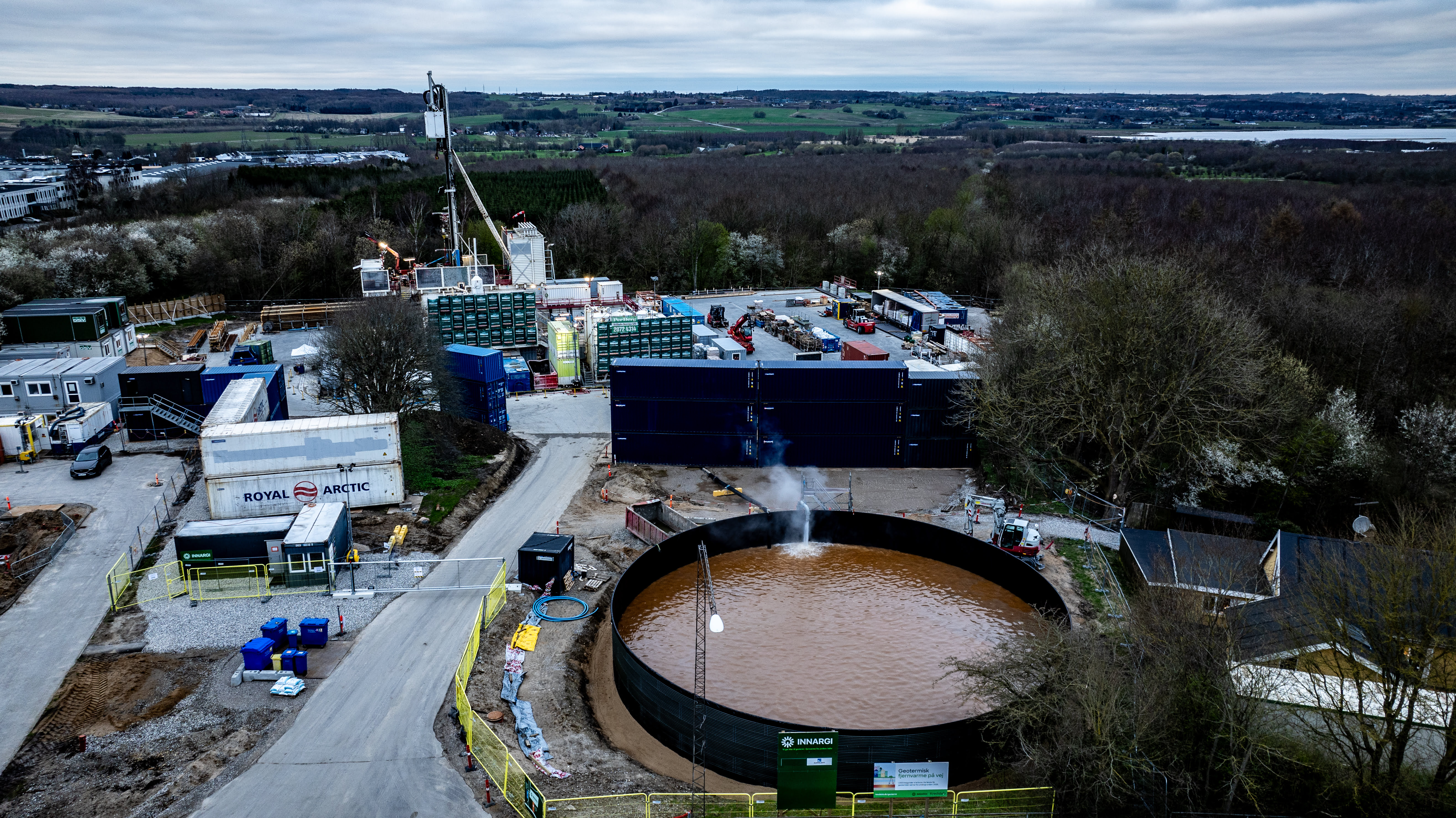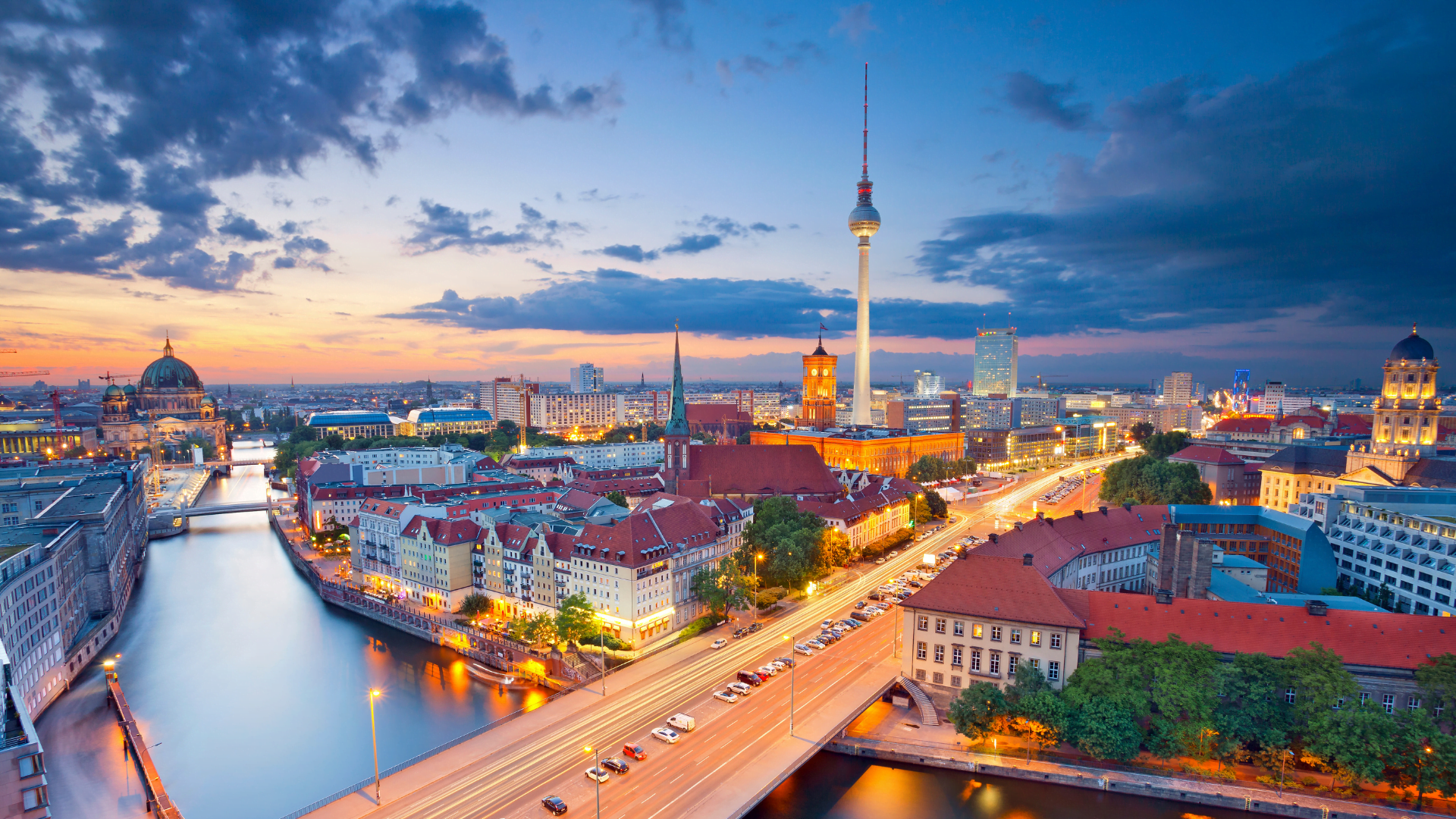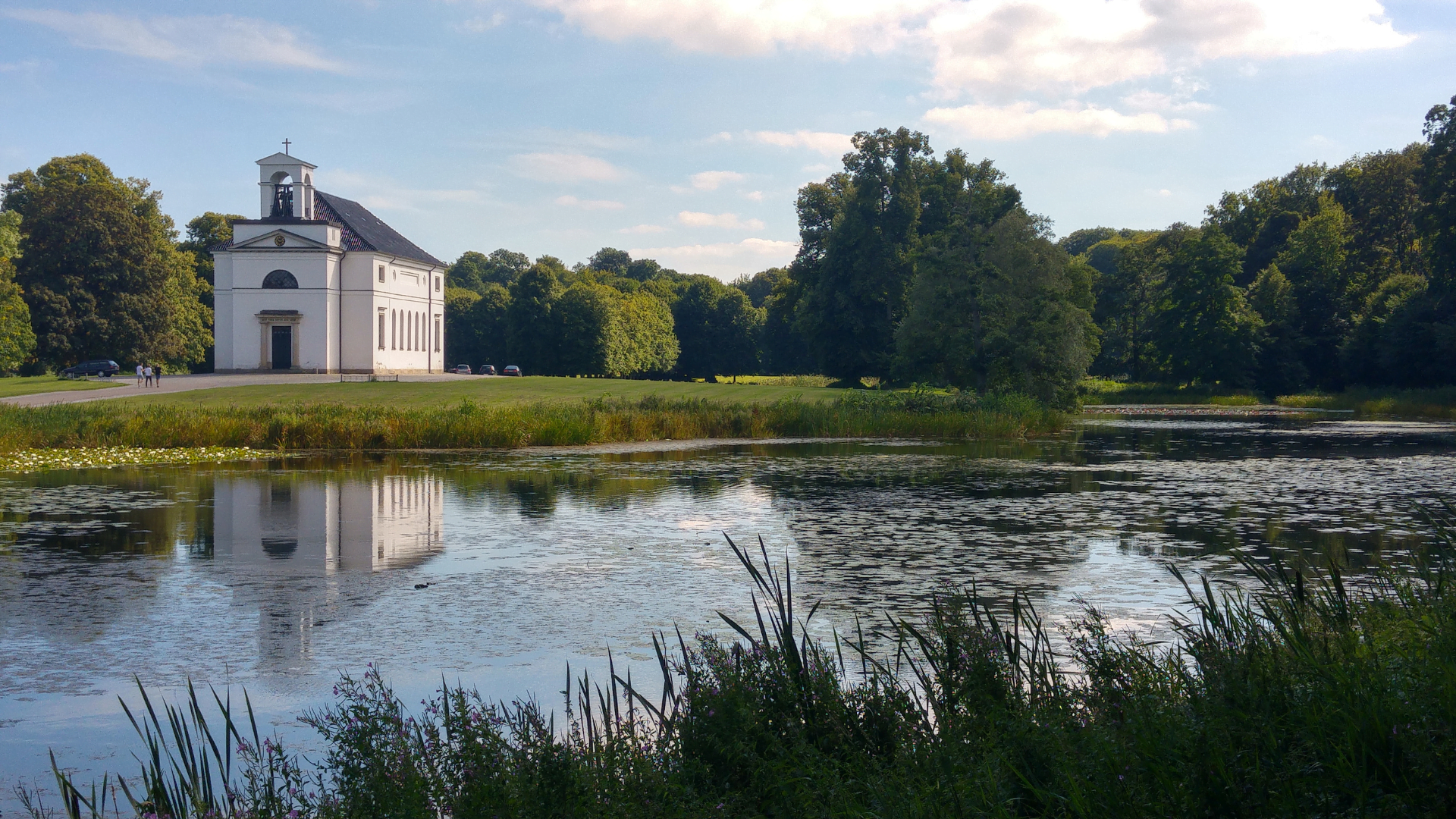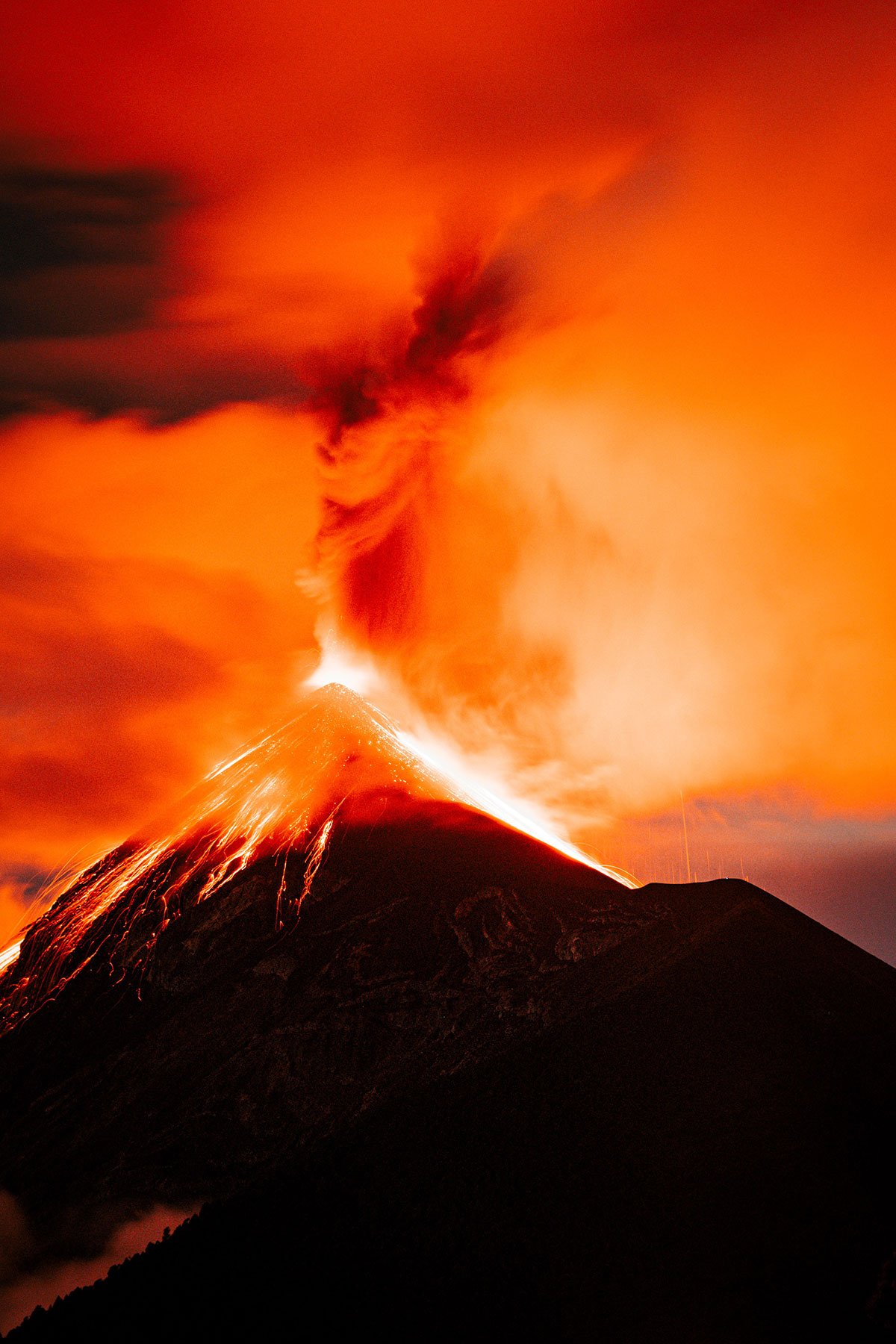
The power of a planet
With a temperature of around 5,400 degrees Celsius, our planet’s core is almost as hot as the surface of the sun. This immense amount of heat emitted from the core radiates towards the earth’s surface and is stored in rocks and subterranean water, making it possible for us to extract. In fact, for every kilometre you drill down, the temperature rises with about 25-30 °C in most of Europe.
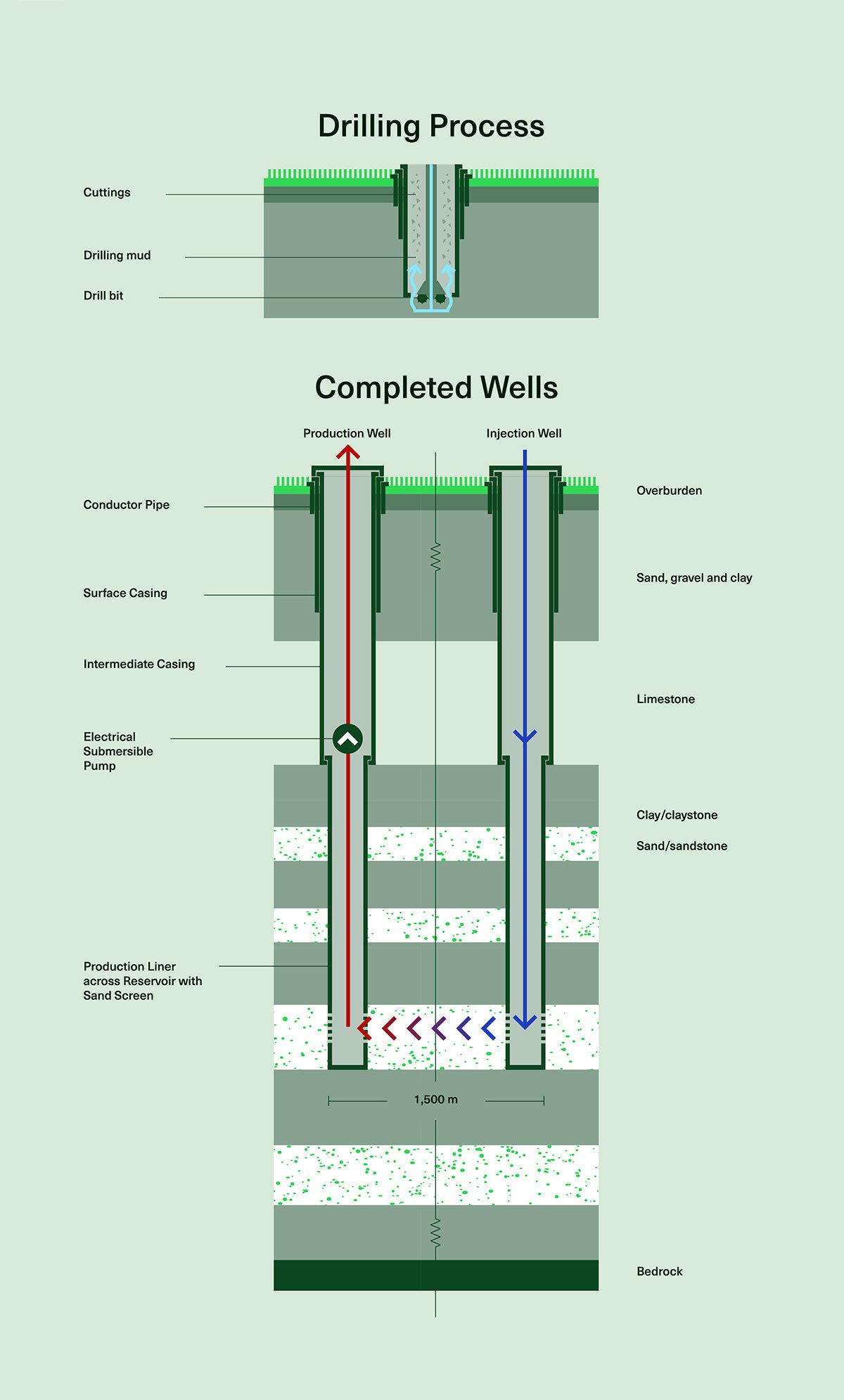
Where and how do we drill?
In order to extract the heat from the subsurface, we first need to find water in so called geothermal reservoirs. If the porosity and permeability of the reservoir is high enough, water can be pumped to the surface at high rates. These reservoirs lie 1,000-3,000 metres below the Earth’s surface – quite a way down. To reach this depth, we need to drill through several subsurface layers, including layers for drinking water. To protect the drinking water, the well is lined with several “telescopic” steel tubes and cement, and the wells are regularly measured for leaks. If a leak is detected, the operation is shut down immediately and the well will be repaired.
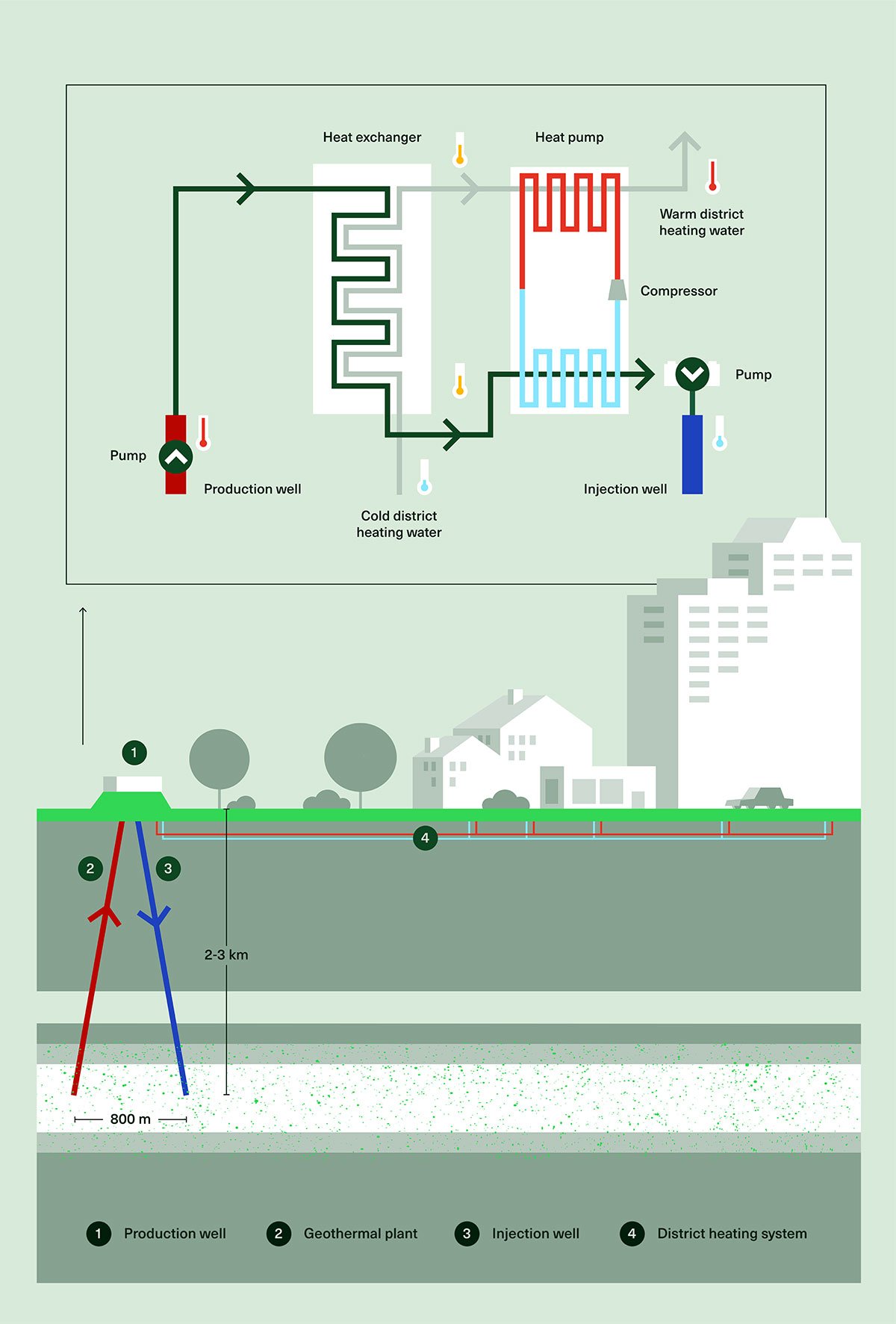
The geothermal heating plant
A geothermal heating plant consists of at least two underground wells and an above-ground installation – called a heating plant or a facility. Two types of wells are drilled: a production well, from which the hot water is pumped up, and an injection well, into which the cooled water is pumped down again. The wells are placed approximately 1.000 metres apart in the reservoir. The exact distance depends on a number of subsurface factors, and the wells are always placed so as to ensure optimal pressure and temperature conditions in the subsurface.
The geothermal water is circulated in a closed loop: The water is pumped up through the production well to the heating plant. In there, the heat is transferred to the district heating system through a heat exchanger, keeping the geothermal water and the water in the district heating network separated. A heat pump also ensures that the water has the right temperature and draws heat out of the geothermal water. Finally, the cooled geothermal water is pumped directly back into the subsurface through the injection well. Over a period of about 30 years, the subsurface reservoir will have cooled slightly, and the wells need to be moved a few kilometres away to allow the reservoir to heat up again.
